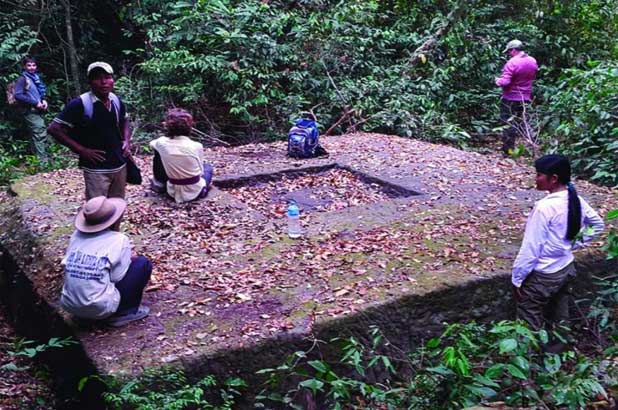Discover the mysterious old city in the jungle of Cambodia
Archaeologists have discovered Mahendraparvata city deep in the jungle of Cambodia.
According to an article published in Antiquity magazine, archaeologists had to deploy laser technology to locate the mysterious city in the middle of the Phnom Kulen mountain range in northern Cambodia.
In a statement attached to the article, archaeologists said that although they knew that the hill of Phnom Kulen could hide traces of the Khmer capital city, archaeologists had difficulty. in approaching the area.
The mountains here are covered with dense vegetation, moreover, they were one of the last strongholds of the Khmer Rouge rebels until the 1990s, so a lot of mines and unexploded ordnance is always a threat to communities living and working in the mountains and making archeological research difficult.

The area that discovered the city disappeared for thousands of years in Cambodia.
By combining aerial laser scanning and ground surveys, the researchers were able to locate the city. In the past, the existence of Mahendraparvata was only known through the only evidence that a handful of isolated temples.
Experts exploit LiDAR technology (advanced surveying technology to measure the distance to a target by projecting it with a laser and measuring reflected pulses with a sensor), an extremely useful technology understand what is hidden in areas of thick vegetation. LiDAR is also widely used in other applications, including self-driving cars, where it allows vehicles with continuous 360-degree views.
Mahendraparvata dating from the 8th and 9th centuries AD, used to be the capital of the ancient Khmer Empire. And although less known than the Khmer temple complex of Angkor Wat and the ancient metropolis of Angkor, according to experts Mahendraparvata dating back to Angkor.
Using a grid-scanned layout, the researchers believe they found some blocks of the city. LiDAR also pointed out that an ambitious hydraulic engineering project was started at Mahendraparvata, but never completed.
The researchers say this means that the water management system is not enough to support wet rice agriculture, so it can be shown that the city does not act as a center of power for people. Khmer for a long time. And although the Mahendraparvata reservoir is not working, it was before and may have inspired the vast artificial lakes to become an outstanding feature of Angkor later.
Experts also studied mysterious mounds at Mahendraparvata. This population consists of 365 separate mounds, erected in geometric models of 15 groups. Pottery and evidence of the 10th century AD were found on the mounds.
Experts said that although the purpose of the mounds was not discovered, it is likely that, no matter what purpose they were used, the mounds were built later than most of Mahendraparvata. .
In another project earlier this year, researchers unraveled new events surrounding the collapse of Angkor. In the study, experts argue that the collapse of the city could be a gradual process in the face of a single catastrophic event.
According to LiveScience , surrounded by jungle, the vast city that was once the thriving capital of the ancient Khmer Empire , at times, the population of Angkor may have reached over 1 million people.
The circumstances surrounding the fall of Angkor have been the subject of debate for many years. One theory is that aggression from neighboring countries left the city abandoned in 1431.
Through research, terrible secrets at the mysterious place Plain of jars in Laos have also been revealed more. In research published earlier this year, experts say this could be the burial ground for thousands of babies and dead children.
- Ancient cities thought only in legends
- Discover the world's largest empire in Cambodia
- Seeing the lost medieval city in Cambodia
- Treasure in the ancient city of Cambodia
- In addition, the theory of the plane MH370 lies in the jungle of Cambodia
- Discover the world's largest empire in Cambodia
- The 15-year-old boy found the ancient city of Maya in the jungle
- Terrible mysteries in the Amazon jungle
- Discover the mysterious Maya queen's skeleton
- 61 people died of mysterious diseases in Cambodia
- The mysterious disease of a series of female workers in Cambodia
- Mysterious giant whale corpse found in the Brazilian jungle
- Cambodia will launch its first satellite in 2013
- Mysterious deep holes in the jungle in Russia
 Discovered an ancient centipede fossil 99 million years old
Discovered an ancient centipede fossil 99 million years old Discovered bat-like dinosaurs in China
Discovered bat-like dinosaurs in China Discovered a 200-year-old bronze cannon of the coast
Discovered a 200-year-old bronze cannon of the coast Discover 305 million-year-old spider fossils
Discover 305 million-year-old spider fossils